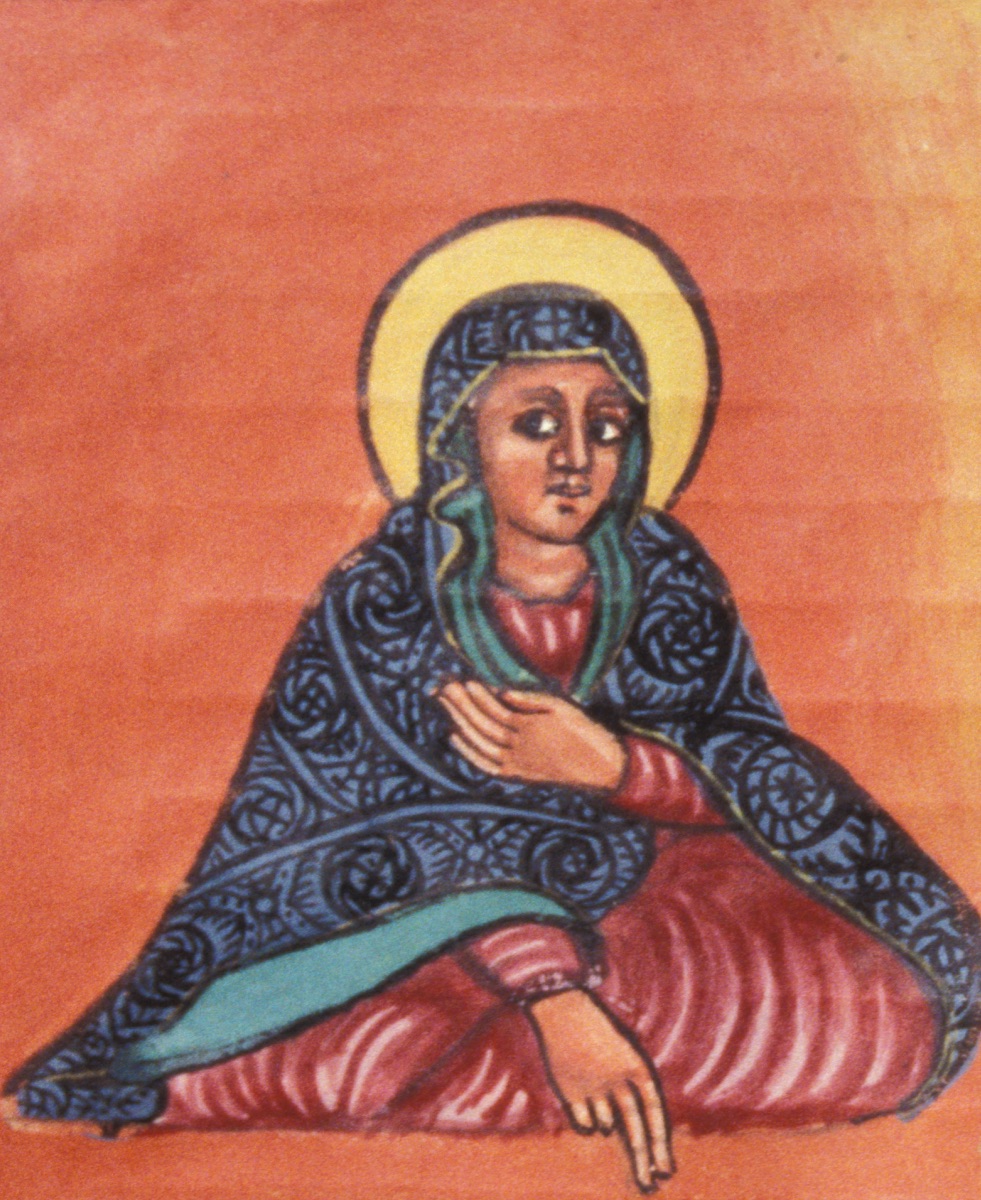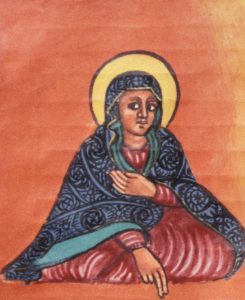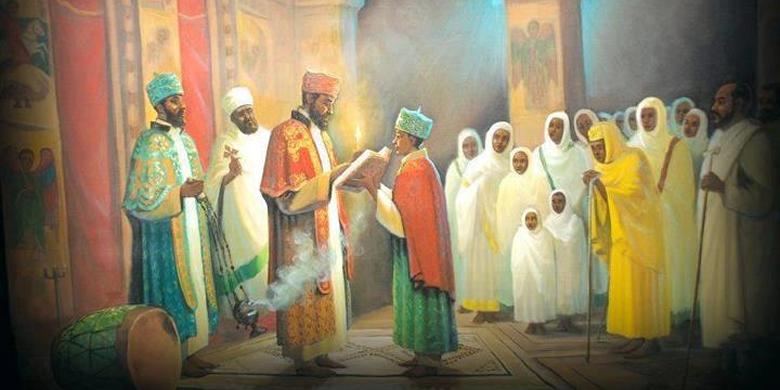
A Temple Guardian & Holder of A Lamp:
The Right Honourable Abbess, Walatta Petros
 Walatta Petros (Ge'ez: ወለተ፡ጴጥሮስ, Wälättä P̣eṭros), was born in the year 1592 and ascended in peace in year 1642 AD. Walatta Petros was born into a noble family with hereditary rights to lands in southern Abyssinia. Her father and brothers were also officials at court.
Walatta Petros (Ge'ez: ወለተ፡ጴጥሮስ, Wälättä P̣eṭros), was born in the year 1592 and ascended in peace in year 1642 AD. Walatta Petros was born into a noble family with hereditary rights to lands in southern Abyssinia. Her father and brothers were also officials at court.
Walatta Petros was married at a young age to a man named Mälka’ä Krastos, one of King Susenyos's counselors. She gave birth to three children, but unfortunately all had died in infancy.
After Jesuit missionaries had privately converted King Susenyos from the traditional Ethiopian orthodoxy to Roman Catholicism in 1612, he called on Walatta Petros's husband to repress the anti-Catholic rebellion started in 1617.
When Mälka’ä Krastos left to fight the rebellion, leading bishops in the Ethiopian monasteries on Lake Tana assisted Walatta Petros in leaving her husband and joining them. After arriving at a monastery on Lake Tana, she took a vow of celibacy and shaved her head to become a nun age of 25 in 1617, in the Ethiopian Orthodox Täwahedo Church, refusing to convert to Roman Catholicism.
 In 1621, King Susenyos forbid the teaching of Ethiopian orthodoxy and Walatta Petros began to protest the king's abandonment of Ethiopia’s faith to embrace foreign beliefs and rituals. For this she was called before the court in 1622 and again in 1625, for preaching also that people should reject the faith of the foreigners and never mention the name of the king during the liturgy. On both occasions she was spared by the King, due to the appeals and influence of her family & her husband, although seperated. Her husband urged the King not to kill her, but to send the leader of the Jesuit priests, Afonso Mendes, to try to convert her. When Mendes was unsuccessful, the king sent her into exile in Sudan for three years.
In 1621, King Susenyos forbid the teaching of Ethiopian orthodoxy and Walatta Petros began to protest the king's abandonment of Ethiopia’s faith to embrace foreign beliefs and rituals. For this she was called before the court in 1622 and again in 1625, for preaching also that people should reject the faith of the foreigners and never mention the name of the king during the liturgy. On both occasions she was spared by the King, due to the appeals and influence of her family & her husband, although seperated. Her husband urged the King not to kill her, but to send the leader of the Jesuit priests, Afonso Mendes, to try to convert her. When Mendes was unsuccessful, the king sent her into exile in Sudan for three years.
In the Sudan she continued her preaching, setting up and leading the religious communities that formed around her, seeking to escape Roman Catholicism.
Over her lifetime, she set up seven separate religious communities, the first in the Sudan, called Žäbäy (ca. 1627), and six around Lake Tana: Č̣anqʷa (ca. 1630), Maselle (ca. 1630), Zäge (ca. 1632), Dämboza (ca. 1637), Afär Färäs (ca. 1638), and Zäbol/Zämbol (ca. 1641).

However by 1632, King Susenyos gave up trying to convert the nation to Roman Catholicism and abdicated in favor of his son Fasilädäs who soon became king. Fasilädäs quickly eradicated Roman Catholicism from the country, restoring the Traditional Ethiopian Täwahedo Church.
Walatta Petros continued as the abbess of her mobile religious community, leading it with her woman friend and without any male leadership. After a three-month illness, Walatta Petros ascended in peace on November 23rd, 1642 CE
The Credentials and Significance:
The Life-Struggles, Resistance and accomplishments of Walatta Petros, is of much significance today on a number of levels. Not only should she be revered for resisting conversion to Roman Catholicism, but also for public speaking out against it. She is also important as she formed many religious communities, without the aid or leadership of men. Her story also highlights, the era, when Rome was trying to extinguish the Ethiopian Christian faith, as well as illustrates clearly how; although both professing the same Christ and presumably Faith, from a Ethiopian perspective the Romans have totally, foreign beliefs and rituals.


